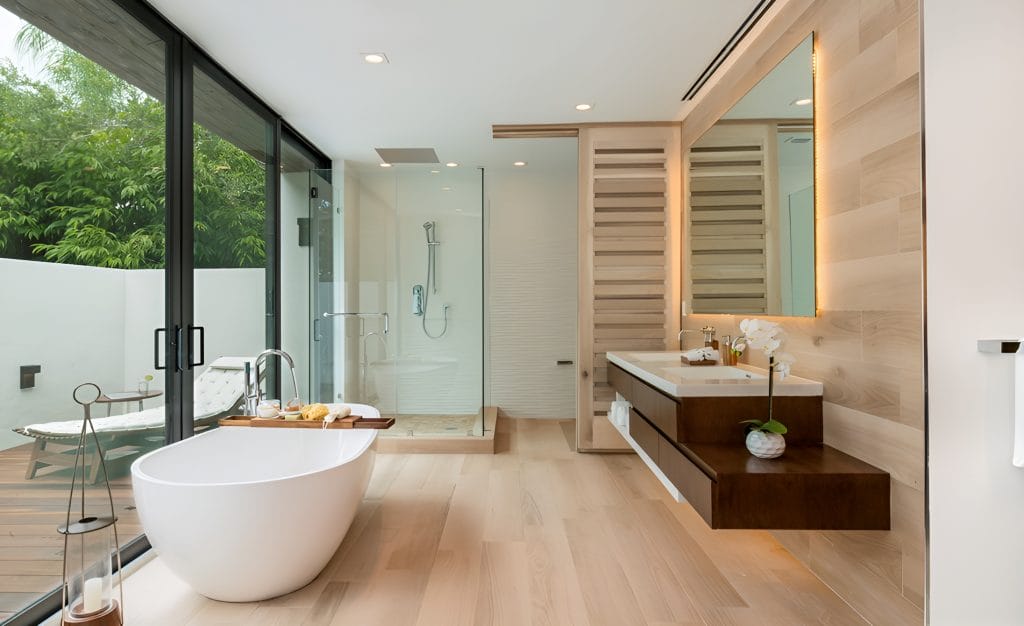
Smart Bathroom Water Usage Monitoring: A Tech-Savvy Approach
Share
In a world increasingly driven by technology, the concept of smart bathroom water usage monitoring is gaining traction, especially among tech professionals and enthusiasts. This innovative approach not only promises to revolutionize how we manage water consumption but also aligns with the global push towards sustainability and efficient resource management. By integrating cutting-edge technology into our everyday bathroom fixtures, we can achieve significant water savings, making smart monitoring an essential aspect of modern living.
The importance of smart bathroom water usage monitoring cannot be overstated. With the growing concern over water scarcity and environmental impact, adopting a smart system offers a proactive solution. These systems provide real-time insights into water usage, allowing users to identify patterns, detect leaks, and make informed decisions about water conservation. This not only helps in reducing water bills but also contributes to the broader goal of environmental sustainability.

How Smart Bathroom Water Usage Monitoring Works
Smart bathroom water usage monitoring systems are designed to provide a seamless integration into existing bathroom setups. These systems typically consist of sensors and devices that monitor water flow and usage patterns. The data collected is then transmitted to a central hub or a mobile app, giving users a comprehensive view of their water consumption.
For instance, IoT-enabled sensors can be attached to faucets, showers, and toilets to track water usage in real-time. This data is crucial for identifying excessive water use or potential leaks, allowing for timely interventions. Moreover, advanced systems can even suggest ways to optimize water use, such as adjusting shower habits or upgrading to more efficient fixtures. For more information on optimizing your bathroom, check out this guide on smart devices.
Benefits of Smart Bathroom Water Usage Monitoring
The benefits of implementing smart bathroom water usage monitoring are manifold. Firstly, it empowers users with precise control over their water consumption, leading to cost savings on utility bills. By providing insights into daily usage patterns, these systems enable users to make informed decisions about reducing water waste.
Moreover, smart monitoring contributes to environmental conservation efforts. By reducing water waste, individuals can significantly decrease their carbon footprint. This aligns with the global push towards sustainability and responsible resource management. Additionally, for those interested in water-saving fixtures, exploring water-efficient toilets can be a great start.
Challenges and Considerations
While the advantages of smart bathroom water usage monitoring are clear, there are certain challenges to consider. The initial cost of installation and the need for regular maintenance can be barriers for some users. However, the long-term savings and environmental benefits often outweigh these initial investments.
Security and privacy are also important considerations. As with any IoT device, ensuring data security is paramount. Users must ensure that their systems are equipped with robust security measures to protect their data from potential breaches.
The Future of Smart Bathroom Technology
The future of smart bathroom technology looks promising, with continuous advancements in IoT and AI technologies. The integration of voice-activated controls and predictive analytics is set to redefine how we interact with our bathroom environments.
As technology continues to evolve, so too will the capabilities of smart bathroom systems. The potential for automated water-saving measures and personalized usage recommendations is immense, paving the way for smarter, more efficient homes.
For those interested in the broader implications of water conservation, exploring resources on water-saving toilets can provide valuable insights.
Conclusion
In conclusion, smart bathroom water usage monitoring offers a forward-thinking approach to managing water consumption. By leveraging technology, users can gain valuable insights into their water usage, leading to cost savings and environmental benefits. As we continue to embrace smart technology, the potential for more efficient and sustainable living becomes increasingly attainable.
For more information on related topics, consider exploring articles on toilet conservation and dual-flush efficiency.

FAQ
What is smart bathroom water usage monitoring?
Smart bathroom water usage monitoring involves the use of technology to track and manage water consumption in bathrooms. It typically includes sensors and IoT devices that provide real-time data on water usage, helping users to conserve water and reduce costs.
How can I implement smart water monitoring in my bathroom?
Implementing smart water monitoring involves installing IoT-enabled sensors on your bathroom fixtures. These devices can be connected to a central hub or a mobile app, providing you with insights into your water usage patterns. For more detailed guidance, you can refer to resources on low-flow toilets.
What are the benefits of smart bathroom water usage monitoring?
The benefits include reduced water bills, environmental conservation, and enhanced control over water usage. Smart monitoring systems provide real-time data, allowing for timely interventions and informed decisions to optimize water usage.
This article contains affiliate links. We may earn a commission at no extra cost to you.
